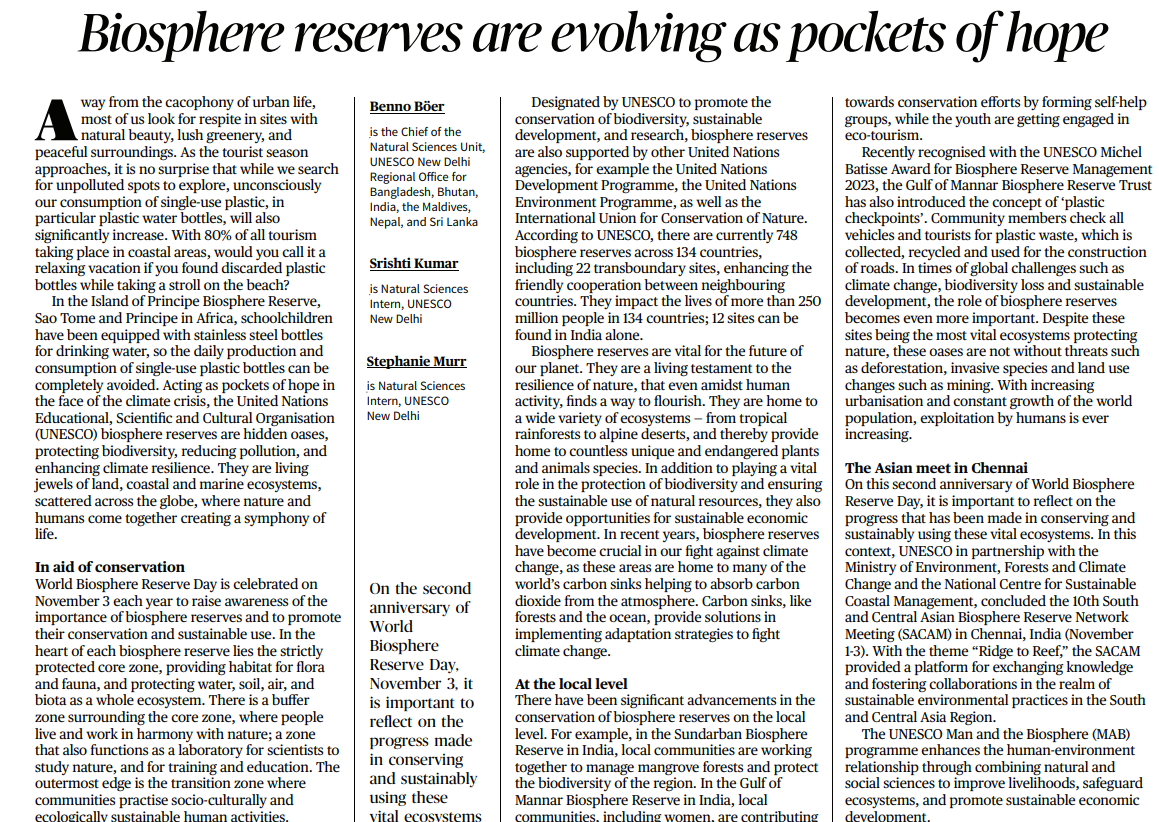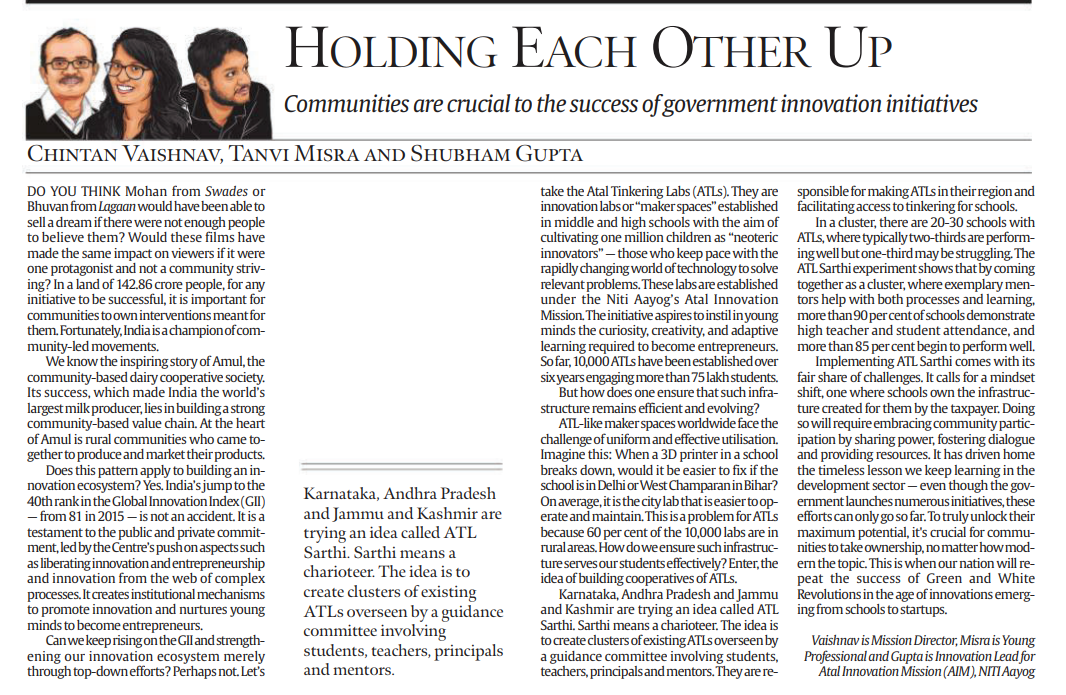Celebrating World Biosphere Reserve Day and the Role of UNESCO Biosphere Reserves
Introduction: Seeking Respite and the Problem of Single-Use Plastic
- Many seek respite from urban life in natural and peaceful surroundings.
- The tourist season leads to increased consumption of single-use plastic, including plastic water bottles.
- Concerns about pollution in coastal areas due to tourism.
Island of Principe Biosphere Reserve: A Model for Reducing Plastic Waste
- In Sao Tome and Principe, schoolchildren use stainless steel bottles to avoid single-use plastic bottles.
- UNESCO biosphere reserves play a crucial role in protecting biodiversity and reducing pollution.
- These reserves are a harmonious blend of nature and human activity.
World Biosphere Reserve Day: A Day of Awareness and Conservation
- Celebrated on November 3 annually to raise awareness and promote conservation of biosphere reserves.
- Biosphere reserves have a core zone for flora and fauna protection, a buffer zone for sustainable living, and a transition zone for socio-cultural and ecological activities.
- Supported by various United Nations agencies and promote biodiversity conservation and sustainable development.
Global Presence of Biosphere Reserves
- There are currently 748 biosphere reserves across 134 countries, with 22 transboundary sites.
- Impacting the lives of over 250 million people in 134 countries, including 12 in India.
- Essential for protecting biodiversity, ensuring sustainable resource use, and mitigating climate change through carbon sinks.
Local Initiatives in Biosphere Reserves
- Local communities actively contribute to biosphere reserve conservation.
- Examples from Sundarban and Gulf of Mannar Biosphere Reserves in India.
- The Gulf of Mannar Biosphere Reserve Trust’s innovative “plastic checkpoints.”
Challenges Faced by Biosphere Reserves
- Despite their importance, biosphere reserves face threats like deforestation, invasive species, and land use changes.
- The growing global population and urbanization contribute to increased human exploitation.
The Asian Meet in Chennai
- Reflecting on the progress made in conserving and sustainably using biosphere reserves.
- The 10th South and Central Asian Biosphere Reserve Network Meeting (SACAM) in Chennai with the theme “Ridge to Reef.”
- The role of the UNESCO Man and the Biosphere (MAB) program in enhancing the human-environment relationship and sustainable development.
Conclusion: The Vital Role of Biosphere Reserves
- Biosphere reserves are crucial for conserving nature, supporting sustainable development, and mitigating climate change.
- World Biosphere Reserve Day highlights their significance and promotes their conservation.
UNESCO and local initiatives contribute to the success of these vital ecosystems.
Community-Led Movements and the Indian Innovation Ecosystem
Introduction
- The power of community and collective action in achieving success.
- Comparing the influence of individual protagonists to community-driven efforts in movies.
Amul: A Community-Based Success Story
- The role of community in Amul’s success.
- India’s status as the world’s largest milk producer due to community-based value chains.
- Emphasis on rural communities coming together for production and marketing.
Building an Innovation Ecosystem in India
- India’s impressive rise to the 40th rank in the Global Innovation Index.
- Factors contributing to this achievement, including public and private commitment.
- The importance of liberating innovation, entrepreneurship, and simplifying complex processes.
- Institutional mechanisms to promote innovation and nurture young entrepreneurs.
Community Participation in Innovation
- The role of community-led initiatives in strengthening the innovation ecosystem.
- Introduction of Atal Tinkering Labs (ATLs) as innovation hubs in middle and high schools.
- Goal of cultivating “neoteric innovators” and instilling curiosity and creativity.
- Establishment of 10,000 ATLs over six years, engaging more than 75 lakh students.
Challenges of ATLs and the Need for Efficiency
- The uniform and effective utilization challenge faced by ATL-like maker spaces.
- Comparing urban and rural ATLs’ ease of operation and maintenance.
- Over 60% of ATLs located in rural areas.
- The imperative to ensure efficient infrastructure for students.
ATL Sarthi: A Cooperative Solution
- Introduction of ATL Sarthi in Karnataka, Andhra Pradesh, and Jammu and Kashmir.
- The concept of creating clusters of ATLs overseen by a guidance committee.
- The committee’s composition, involving students, teachers, principals, and mentors.
- Responsibilities for regional ATL development and facilitating access to tinkering for schools.
Conclusion
- The significance of community-led movements in India’s innovation ecosystem.
- The need for collective efforts in nurturing young innovators.
ATL Sarthi as an example of cooperative solutions to enhance the efficiency of innovation infrastructure.



